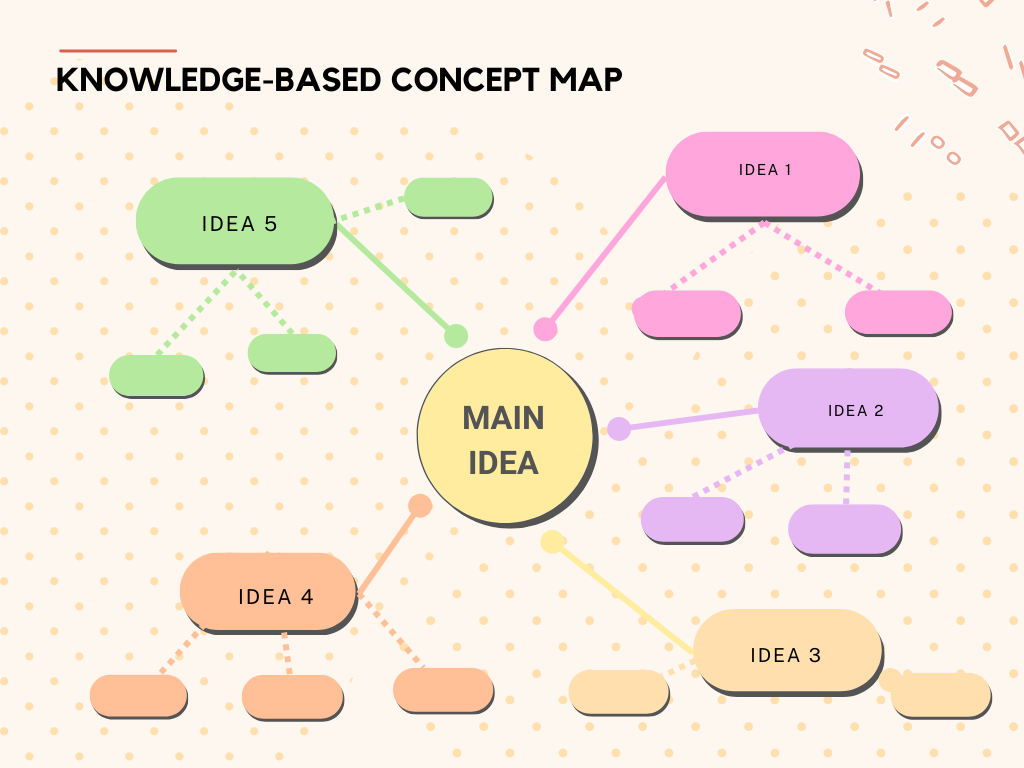
Home / Student Tasks / Knowledge-Based Concept Mapping Task
KNOWLEDGE-BASED CONCEPT MAPPING TASK
A knowledge-based concept mapping tool asks students to visually represent bodies of knowledge relevant to an interdisciplinary problem. This can assist students in drawing links between disciplines, identifying ambiguities, and educating collaborators in their own fields.

This task is most suitable for:
Interactions
Mixed (interdisciplinary) groups
Degree of Integration
Interdisciplinary
Problem structure
Open-ended problems
Skill targets
Meta-cognitive, interdisciplinary problem-solving
- Metacognitive Skills (4/7)
- Interdisciplinary Problem Solving Skills (1/7)
- Team Skills (2/9)
What are Knowledge-Based Concept Mapping Tasks?
In a knowledge-based concept map students (individually or in groups) visually represent conceptual knowledge for a body or bodies of knowledge. Concepts represent physical or social quantities and qualities such as for example types of chemical element or economic social class. In a map concepts are placed and then linked. Links can represent cause/effect relations (or correlations) and functional relations, as well as logical relations such as membership relations (or component relations) or other hierarchical relationships.
Representations can be put together through pen and paper, or digitally. A task can be performed individually or collaboratively in small groups.
Ready-made Resources
This resource includes a lesson plan, lesson slides and a warm-up activity.
Universal tool usable for students & researchers to map out relationships between disciplines and planning.
Potential Uses
-
Communicating Disciplinary Knowledge
Students map out the conceptual structure of a relevant discipline or field (or part of it) of their own at the beginning of a project in order to facilitate cross-disciplinary communication with group members.
-
Developing Disciplinary Knowledge
Students map out the conceptual structure at the beginning and end of a programme in order to illustrate development in their own “reflective” disciplinary understanding through interdisciplinary interaction.
-
Integrating Disciplinary Knowledge
Students mas out a schema of knowledge integration illustrate links between different conceptual frameworks both before and after a project in order to facilitate integration and demonstrate interdisciplinary development.
Interesting Sources
Description of paper by Krupczak:
Krupczak, J. (2007, June), Using Insights From Non Engineers To Improve Introduction To Engineering Via Functional Analysis Paper presented at 2007 Annual Conference & Exposition, Honolulu, Hawaii. 10.18260/1-2–2191
Description of paper by Nair:
Nair, I. (1998), Life Cycle Analysis and Green Design: A Context for Teaching Design, Environment, and Ethics. Journal of Engineering Education, 87: 489-494. https://doi.org/10.1002/j.2168-9830.1998.tb00383.x
Description of paper by Scherl et al:
Scherl, A., Dethleffsen, K., & Meyer, M. (2012). Interactive knowledge networks for interdisciplinary course navigation within Moodle. Advances in Physiology Education, 36(4), 284-297.
